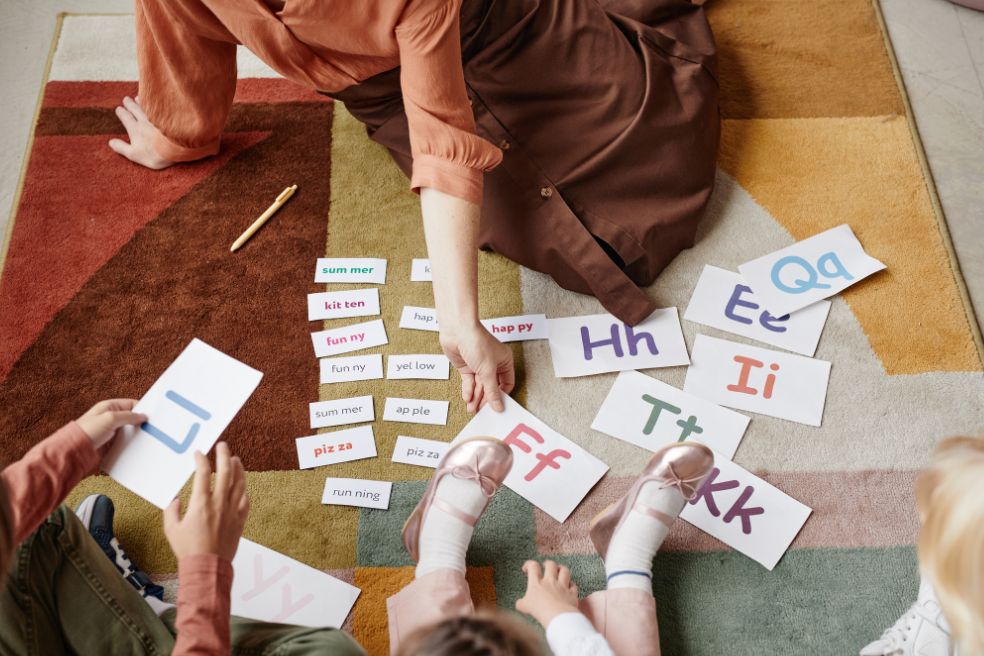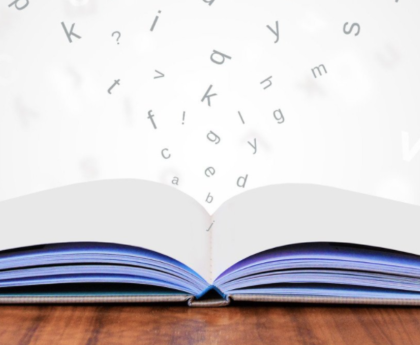Reading is an amazing, sophisticated ability unique to humans. It takes several important skills to become a high-level reader, all of which are obtained at different stages of development.
Over the last century, researchers in multiple fields of study worldwide have compiled evidence on how humans learn to read and write. Cognitive psychologists, speech-language pathologists, educators, linguists, and neuroscientists contribute to the body of evidence known as “the science of reading.”
This collection of evidence points to the most proven and effective way to help kids develop into competent, curious readers. It can and should guide early reading instruction.
If you’re trying to help your child read better or wondering how literacy works, here’s what you need to know about reading science.
What is the Science of Reading?
The science of reading (SoR) is an evidence-based, ever-evolving body of research. It’s not a specific reading program or theory but rather a collection of research. It reveals how people across cultures, languages, and skill levels effectively learn to read.
The science of reading can explain:
- How children develop literacy skills
- How humans become proficient in reading
- Why certain literacy instruction methods don’t work
- Why some people struggle with reading more than others
- What parts of the brain are responsible for reading
- What methods are most effective at teaching, assessing, and improving a student’s reading abilities
More than ever, educators are using the science of reading to teach children of diverse abilities and needs. SoR methods implement five main reading concepts, known as the “Big 5.”
The 5 Elements of Reading Instruction
Five fundamental skills are required for successful reading. These skills should be taught explicitly and systematically.
Early readers learn these five skills cumulatively:
- Phonemic Awareness: Knowing that words are made up of a series of smaller sounds.
- Phonics: Knowing that alphabetical letters represent specific sounds that can create words when blended.
- Fluency: Recognizing and expressing words with increased accuracy, ease, speed, and prosody.
- Vocabulary: Learning new, more complex words in text and speech.
- Comprehension: Understanding the context, meaning, and main point of reading material.
Understanding the Science of Reading: A Brief History
SoR consists of decades of interdisciplinary research. Historically, several theories on reading instruction have been argued and practiced. To understand the development and accuracy of reading science, let’s look at how this knowledge came to be.
The Reading Wars
In the mid-1800s, U.S. politician and educational leader Horace Mann introduced what became the “whole language” approach to reading. This perspective believed that phonics— the practice of correlating sounds to alphabetical letters— was irrelevant, distracting children from learning and appreciating word meanings.
Whole language reading instruction involves visual memorization of whole words, often with aid from visual cues such as pictures. The theory upheld reading as a partially innate, intuitive ability that students could spend time developing on their own.
Remember Dick and Jane? These picture books were popular in the “whole language” model, otherwise known as the “look-say” approach. While some teachers stuck with phonics, many followed Mann’s reform. Schools widely adopted his method from the 1920s to the 1950s, believing that students mostly needed a “literacy-rich environment” to make sense of words.
During this time, The Reading Wars heightened. Educators argued the best scientific ways to teach reading. Some said phonics was fundamental; others claimed memorization was the best way. Kenneth Goodman, the founding father of the whole language memorization approach, believed that “Reading is a psycholinguistic guessing game.”
The Science of Reading vs Balanced Literacy
In the 1960s, Harvard psychologist Jeanne Chall published Learning to Read: The Great Debate, in which multiple studies revealed that phonics was, in fact, a foundational aspect of reading instruction. Still, the reading debate continued for decades. Who knew people could get so heated about phonics?
By the 1990s, Balanced Literacy became the educational norm. It combined whole language theory and minimal phonics instruction through a series of student workshops. Balanced Literacy popularized the “3 cueing system,” focusing on three reading cues: meaning, structure, and visual information. Students were encouraged to guess words they didn’t know by looking at the whole word, or by using the context and grammatical structure of the sentence for clues. Teachers often introduced reading concepts to the class, then engaged students in group reading and independent reading. Elementary students were grouped based on reading level and then asked to engage in a reflection session afterward.
In 2000, the National Reading Panel published a report showing that phonics is an integral piece of learning to read. It listed “systematic, explicit phonics instruction” as one of five pillars that lead to proficient reading— the “Big 5” reading elements we know today.

In 2005, a seven-year research trial referred to as The Clackmannanshire Report concluded that synthetic phonics “has a major and long-lasting effect on children’s reading and spelling attainment” (2005, p. 69). Synthetic phonics begins with blending individual letter sounds to read words. This is different from using analogies or onset-rime phonics, which relies on the memorization of word parts.
Over the following two decades, Balanced Literacy slowly began being replaced by the science of reading in some education settings. It wasn’t until 2020, during the COVID-19 lockdowns, that SoR gained national attention. Educators and parents began having serious conversations about students’ lowered literacy rates and addressing the shortcomings of Balanced Literacy. This influenced a surge of investigative journalism on the science of reading, including the Sold a Story Podcast, which publicly delineated the reality of the situation. Today, there are continued efforts toward nationwide policy moves to transform reading instruction for all.
The Simple View of Reading
One of the underlying ideas of SoR comes from the Simple View of Reading. In 1986, Gough and Tunmer introduced the Simple View theory, which explains that decoding and language comprehension skills are prerequisites to reading comprehension.
- Decoding: Sounding out the letters in words to read words
- Language Comprehension: Understanding what speech means
The important takeaway from the Simple View of Reading is that children need an understanding of decoding and language comprehension in order to figure out what they’re reading. A child might need extra help with decoding, language comprehension, or both. While these skills can be assessed separately, both are essential for accurate reading comprehension.
With former reading theories, many educators thought that decoding skills weren’t important in reading instruction. New readers were often taught to guess words based on picture or context cues instead of decoding. Current research indicates decoding and “prior knowledge” (language/topic comprehension) to be two essential reading skills.
Why Children Need (and Deserve) Proven Reading Instruction
To understand literacy development and the challenges early readers face, we must understand several brain functions.
In social dynamics, children learn how to communicate early. Oral language naturally begins to develop at a young age.
Reading does not.
Contrary to past reading theories, reading is not an innate human ability. It requires specific, consecutive instructional experiences.
The part of the brain that processes sounds (the phonological processor) is hardwired into us at birth. So is the part of the brain that processes visual stimuli (the orthographic processor).
However, the part of the brain that connects language sounds with visual words (the phonological assembly) is not hardwired at birth. It must be developed through instruction over time.
When children deliberately practice age-appropriate reading lessons, neural connections form between different parts of the brain. Most children cannot intuitively learn to read. Nor should they be forced to guess or struggle their way through the process.
Knowing the science of reading is crucial in offering kids the literacy skills they deserve. It gives reading instructors a direction and purpose. It gives children of all abilities the knowledge and skills they need to grow into competent individuals.
Help Kids Learn to Read With Reading.com
As proven reading science continues to expand, there’s hope for improved literacy in our world. Kids who are learning to read now have an opportunity to begin with structured, explicit, and systematic reading instruction based on the five essential literacy skills.
Many parents and teachers use reading apps to help children practice reading. Apps like Reading.com can be fun, effective tools to reinforce accurate reading instruction and create a valuable, educational bonding experience.
Reading.com uses evidence-based methods of structured literacy to help kids develop a lifelong love of reading. Your child won’t have to memorize whole words or rely on visual cues, but instead learn the crucial process of decoding and comprehending.
Want to experience the science of reading with your child or student? Get started with a free trial of our reading app today!





